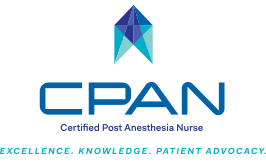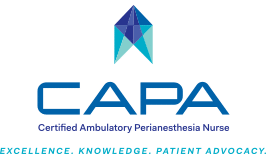News & Events
Question of the Week
According to ASPAN Standards of Perianesthesia Nursing Practice, minimum safe staffing parameters for Phase I PACU includes:
- at least two registered nurses.
- a nurse-patient ratio of 1:1 for general surgical patients.
- a nurse-patient ratio of 1:3 for ambulatory surgical patients.
- at least one nurse.


